The B-52 bombers finished America’s longest war in much the same way as they began: carrying airmen called to military service in the aftermath of 9/11, hunting Taliban fighters through the mountains of Afghanistan and watching as the seat of government in Kabul changed hands.
After 20 years of counterterrorism operations in Southwest Asia, the Stratofortresses’ five-month tour to assist the U.S. withdrawal from Afghanistan was a last-ditch effort for America’s oldest bomber to secure some stability in the final days of the war.
Six B-52s and around 300 airmen from the 5th Bomb Wing at Minot Air Force Base, North Dakota, deployed to Al Udeid Air Base in Qatar from April to September as the sole B-52 unit taking part in the withdrawal. That group — named the 23rd Expeditionary Bomb Squadron while abroad — flew more than 3,100 hours and 240 combat sorties during the deployment.
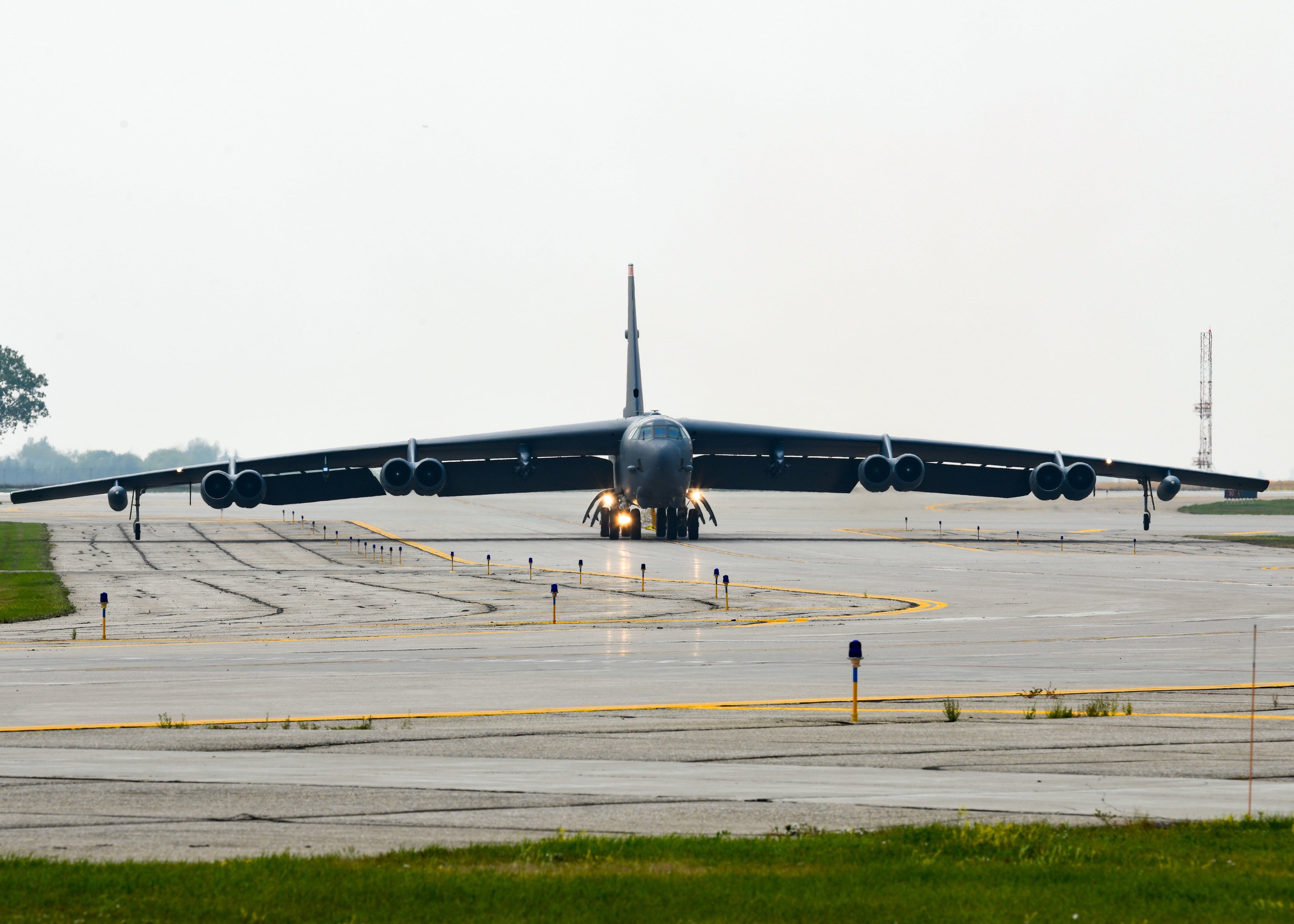
For all but three airmen, it was their first time participating in a conflict that has defined modern combat since 2001.
“For the vast majority of the squadron, this wasn’t going back,” Lt. Col. Michael Middents, 23rd Bomb Squadron commander, told Air Force Times Sept. 30. “This was going for the first time, and for a war that, really, we’ve kind of seen from the sidelines.”
They didn’t expect to be there. The bomb squadron, one of two under the 5th Bomb Wing, was preparing for a stint at Morón Air Base in Spain as part of a task force to reassure allies and deter potential threats in the region. Then U.S. Central Command warned they might reroute to Qatar instead.
“As they were looking at the plan on how they needed to withdraw all the U.S. and coalition forces out of Afghanistan, they saw that the bomber brings so much to them,” Middents said. “Bombers — the B-52 in particular — offer things that other platforms can’t: precision strike, long-range capability … and then also the persistent time on station.”
Minot airmen had about two weeks to get ready for the Afghanistan mission. They collaborated with joint terminal attack controllers (JTACs), the special tactics airmen trained to call in airstrikes from the ground, found another squadron to handle the Spain deployment and were packing the bombers when they got the call to go.
Eighteen hours later, they touched down in Qatar.
“One of my guys landed from that 18-hour sortie getting over there, he walked out, he was all smiles and said, ‘This is why I signed up. This is what I wanted to do,’” Middents said.
The expeditionary squadron took four days to adjust their sleep schedules for combat in a new time zone and to understand the rules of engagement. Then they headed out on an unarmed flight to announce their presence with airborne loops over Kabul in the east and Kandahar in the south.
RELATED
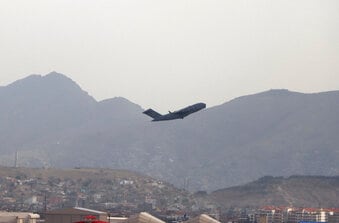
Their primary mission was to provide armed overwatch and protect coalition forces on the ground, in addition to supporting the Afghan military as they tried to hold off the Taliban’s advance. The goal was to move U.S. and partner forces from locations further afield to Bagram Air Base near Kabul, then to shutter Bagram and send the Americans home.
“A lot of the work that we were doing was actually using our targeting pods” to boost troops’ situational awareness, Middents said. “For force protection purposes, especially as we closed down the different airfields … we would arrive over the airfield and then we’d take, basically, scans of the surrounding areas. If we saw a threat, we’d call it out.”
On rare occasions, he said, the process of finding interesting objects and conferring with a JTAC would escalate into needing an airstrike.
Missions were coordinated by the Combined Air Operations Center at Al Udeid that serves as the command hub for U.S. and allied airpower in the region. People working in Qatar would tell the bomber force where they would likely focus the next day, and the airmen would look at any geographic or intelligence concerns of which they needed to be aware.
B-52s flew over Pakistan on their way to Afghanistan, where they checked in with the JTAC to confirm where they were headed.
“Oftentimes he’ll send you right to where you thought you were going, but other times he’ll snap you to a different location,” Middents said. “Whereas you may have thought you were going up to the Kandahar area, he snaps you over to Herat and says, ‘Hey, there’s something going on.’”
Because the Taliban was largely cooperating with the U.S. government to let Americans safely exit, B-52 missions entailed fewer airstrikes than the Minot airmen expected. Bombers patrolled overhead to show that if the insurgent group didn’t uphold its end of the deal, “there’s going to be a very high price to pay,” Middents added.
RELATED
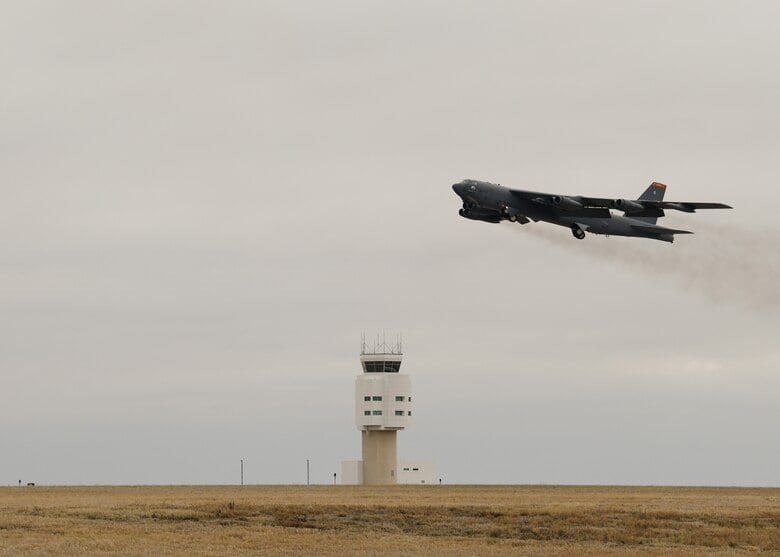
Still, the bombers weren’t only there for reconnaissance. B-52s were called in to defend Afghan military checkpoints across the country and other partners that were overrun or at risk, or to take out Taliban fighters who had already attacked Afghan forces.
“There was a United Nations outpost that was attacked by the Taliban. They were overwhelmed, and so as they were trying to get out of there, the Taliban [gave] chase. We were called to put in what’s called a ‘terrain-denial bomb’ down … in between the retreating UN force in that case and the Taliban,” Middents said. The insurgents retreated and UN staffers escaped to safety.
Bombers also flew “show of presence,” or intimidation flights, to aid Italian allies, Middents said.
Fawad Aman, a former spokesperson for the Afghan defense ministry, said on Twitter that a B-52 attack on a Taliban gathering Aug. 7 in the northern city of Sheberghan inflicted “heavy casualties.” Sheberghan that weekend became the second regional capital to fall to the insurgent group. A U.S. Central Command spokesperson did not confirm the bomber’s involvement by press time.
As the military has pledged to investigate an Aug. 29 drone strike that mistakenly killed 10 civilians, including seven children, Middents said he had no concerns about the fidelity of the targeting information given to B-52 crews in Afghanistan.
“There’s a long conversation happening [in combat] between multiple checkpoints, players, rules of engagement, etc., to make sure that what happened there at the end doesn’t happen,” he said. “By and large, these are very successful at making sure that we’re hitting the right target.”
Many sorties lasted 18 to 20 hours, particularly during a combat surge when the squadron was asked to boost the number of missions by 50 percent every day for three weeks. Maintainers worked around the clock to keep the bombers aloft.
“The hardest part of the ops tempo here would definitely be the number of sorties we are generating currently, making sure that everything is ready at all times, because we never know when something’s going to pop up and we might have to send another sortie up,” said Staff Sgt. Gavin Calder, a bomber electrician with the 379th Expeditionary Aircraft Maintenance Squadron at Al Udeid, in an Air Force video published June 11.
RELATED
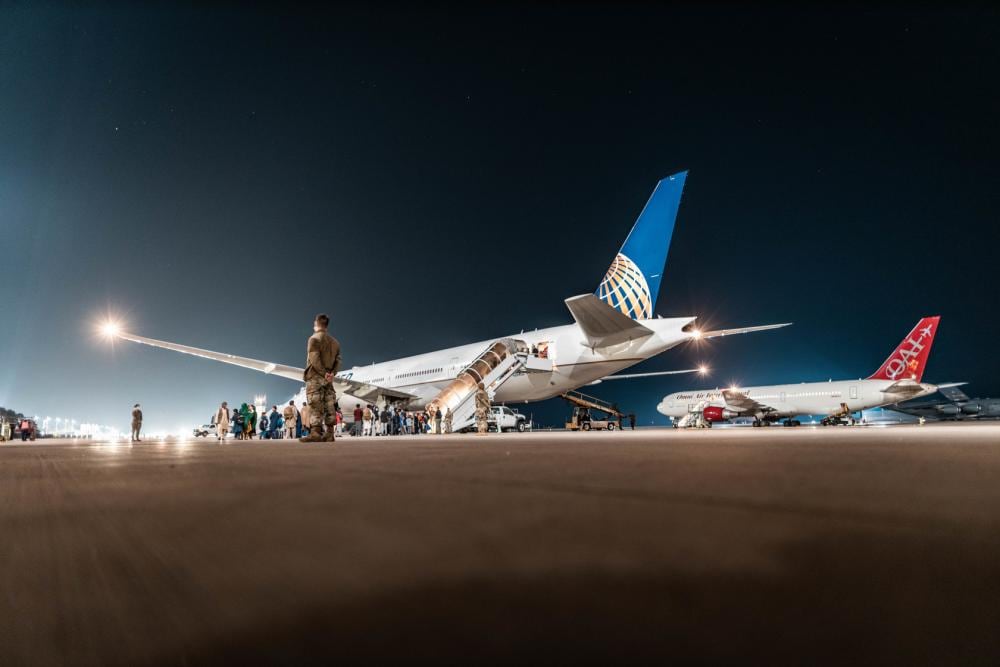
Running those jets harder than usual quickly wore down their parts, so some bombers started flying longer missions to give others more time for maintenance. That caused one B-52 to take on a 22-hour mission — the longest of the deployment.
“They were doing the scans, they were making sure that the ground parties knew what was going on, and then pinging around between multiple cities out there,” said Middents, whose longest sortie clocked in just shy of 18 hours.
Extra crew members came along for those long-haul missions to pick up the slack when others got tired. Some airmen remained in their seat for the entire sortie, fueled by adrenaline and happy to be involved.
“You are constantly in orbit. You’re constantly looking for targets, for threats. You’re passing information,” he added. “It’s actually pretty amazing how fast these missions end up going.”
Despite the deadly Aug. 26 suicide bombing at Hamid Karzai International Airport in Kabul orchestrated by the local Islamic State affiliate, Middents said coalition forces focused largely on the Taliban during the withdrawal.
Another challenge for the retreating U.S.-led coalition was losing access to 20 years’ worth of infrastructure across Afghanistan that troops had relied on throughout the war. That offered an atypical opportunity for the B-52: using its secure messaging system as a data-sharing hub in the absence of EQ-4 and E-11A Battlefield Airborne Communications Node planes.
At the end of August, armed B-52s constantly loomed overhead in Kabul for the final few days of American involvement there, sharing data about the situation on the ground and on weather conditions in the air. The U.S. was wrapping up one of the largest military-led evacuations of civilians in American history as the Taliban returned to power, frustrating airmen who felt unhelpful in the face of Afghanistan’s collapse.
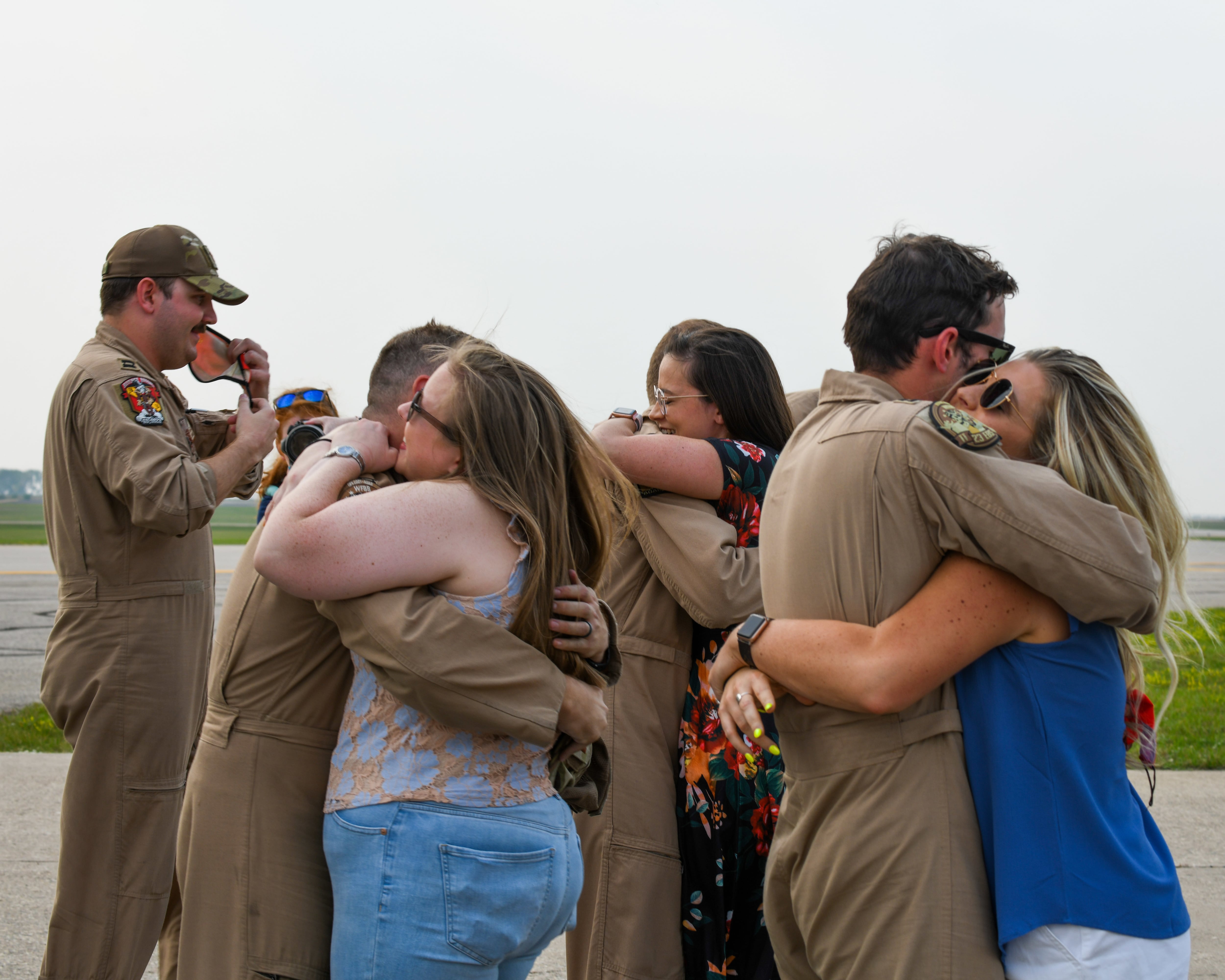
“There was definitely an appetite to want to be able to engage more, help more with things that were going on down there,” Middents said. “What it came down to was there were platforms that were better suited if they needed a kinetic strike in certain types of areas.”
Now back at Minot, aircrews are processing what they saw and preparing to return to their routine bomber task force missions in other parts of the world. What’s stuck with Middents is his airmen’s stamina and generosity as Operation Allies Refuge unfolded in the final month of their deployment.
Airmen would fly 12-hour missions keeping watch over Kabul, then turn into aid workers back in Qatar — passing out baby diapers to refugee mothers, handling passenger lists for outbound C-17 transport planes, putting up crowd-control measures, laying out cots, serving food and more.
“They’re flying combat missions overhead, protecting these people, and then a day later, probably that same person that you saw on the targeting pod is there at Al Udeid … giving a bottle to a mom who’s trying to feed her baby,” Middents said. “[It’s] the last thing we expected to happen at all during that time.”
Rachel Cohen is the editor of Air Force Times. She joined the publication as its senior reporter in March 2021. Her work has appeared in the Washington Post, the Frederick News-Post (Md.), Air and Space Forces Magazine, Inside Defense, Inside Health Policy and elsewhere.




